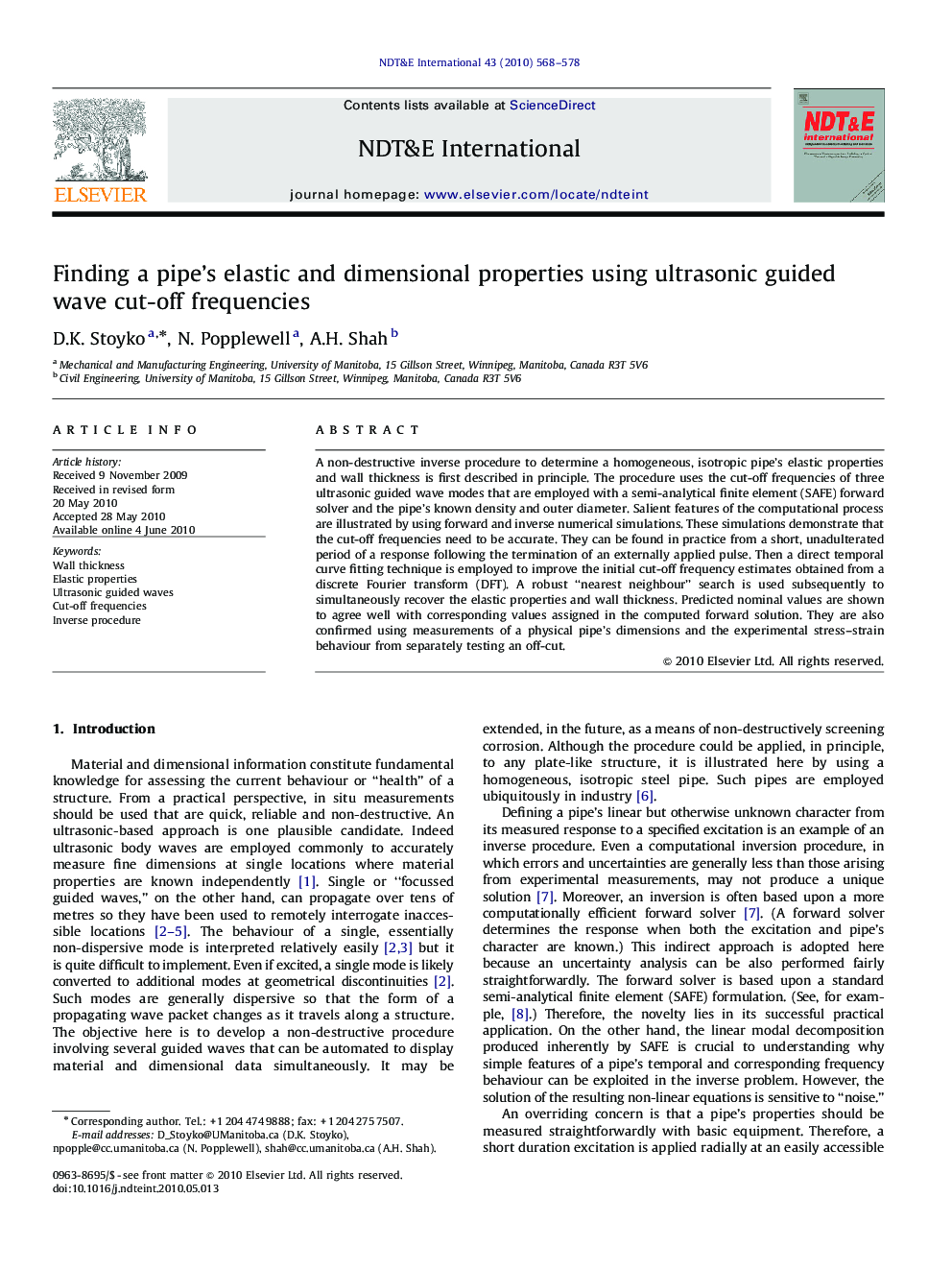| Article ID | Journal | Published Year | Pages | File Type |
|---|---|---|---|---|
| 10292833 | NDT & E International | 2010 | 11 Pages |
Abstract
A non-destructive inverse procedure to determine a homogeneous, isotropic pipe's elastic properties and wall thickness is first described in principle. The procedure uses the cut-off frequencies of three ultrasonic guided wave modes that are employed with a semi-analytical finite element (SAFE) forward solver and the pipe's known density and outer diameter. Salient features of the computational process are illustrated by using forward and inverse numerical simulations. These simulations demonstrate that the cut-off frequencies need to be accurate. They can be found in practice from a short, unadulterated period of a response following the termination of an externally applied pulse. Then a direct temporal curve fitting technique is employed to improve the initial cut-off frequency estimates obtained from a discrete Fourier transform (DFT). A robust “nearest neighbour” search is used subsequently to simultaneously recover the elastic properties and wall thickness. Predicted nominal values are shown to agree well with corresponding values assigned in the computed forward solution. They are also confirmed using measurements of a physical pipe's dimensions and the experimental stress-strain behaviour from separately testing an off-cut.
Related Topics
Physical Sciences and Engineering
Engineering
Civil and Structural Engineering
Authors
D.K. Stoyko, N. Popplewell, A.H. Shah,
